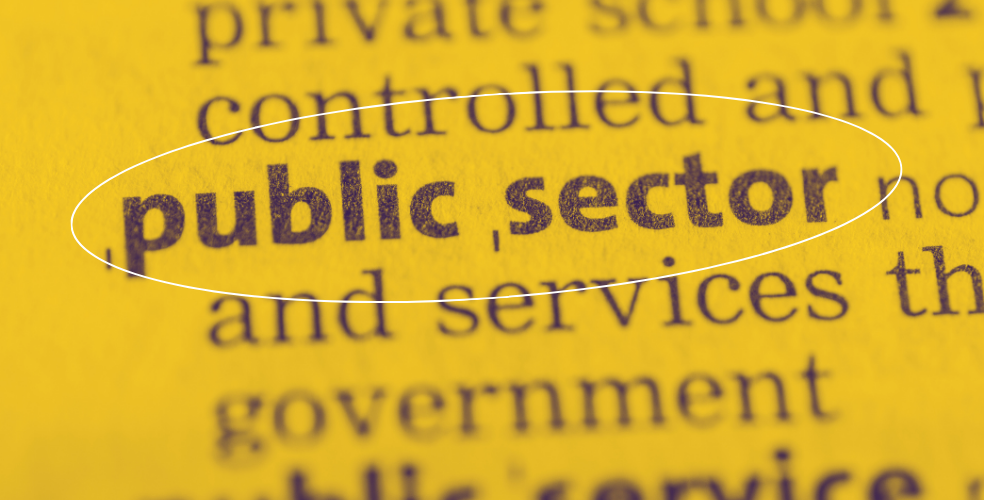 August 09, 2023
August 09, 2023

August 09, 2023
In the realm of crisis communication, few challenges are as delicate and pressing as addressing shootings in educational settings. We had the privilege of conversing with Irene Payne, a distinguished expert in crisis communication and the Associate Director of Crisis Communications at Kenyon International Emergency Services. With her origins in the United Kingdom and her current base in Nevada, USA, Irene's remarkable journey is marked by a wealth of experience in managing communications during the most critical moments.
A Heartfelt Exploration of Crisis Communication Expertise
Irene's profound insights into managing communication in the aftermath of school shootings resonate deeply, underscoring the emotional toll and unique demands of these crises. Her extensive expertise has earned her recognition, including the prestigious 'Leadership Through Communication' award presented by the American Association of School Administrators and the National School Public Relations Professionals Association in 2012. Irene's guidance and contributions extend beyond her role, as she is also a respected workshop leader at the upcoming Education Communicators Boot Camp 4, scheduled for October 26-27 in Chicago.
During this transformative event, Irene will host a full-day workshop, empowering education communicators to refine their crisis plans for school shootings. This invaluable opportunity to learn directly from a seasoned professional enhances the workshop's significance in fostering safe, compassionate, and well-prepared learning environments.
Can you share a bit about your background and experience in crisis communications, particularly related to educational settings and school shootings?
I have worked in crisis/marketing communications for most of my professional life. My first experience of working in an educational setting was in London, where I worked for a higher education nonprofit. That role eventually took me to the United States where I was able to get deeper into a school system, dealing with crisis communications on a wide range of incidents including fire, weather, medical emergencies and weapons.
Crisis communications during school shootings require a unique set of skills. What are the key elements that distinguish crisis communications in this context from other types of crises?
The key element that elevates a weapons crisis in an educational setting is the stakeholder’s emotional involvement. Children being placed in danger increases emotions exponentially. Family members can act in ways that wouldn’t have been foreseen prior to their children being placed in danger. It is important for a communications professional to remember that fact, and not let those extreme emotions negatively impact you working to the best of your ability.
In a school shooting crisis, timely and accurate communication is crucial. How do you approach managing the flow of information to ensure accuracy while responding promptly to concerned stakeholders?
Timely and accurate communication is a critical piece to dealing with a crisis in any situation. However, when there is a crisis in a school, possibly with over 2000 students, the pressure to provide information exponentially increases. Pressure pours in from all sides; parents, media, colleagues, elected officials etc. It is vitally important to ensure you have verified details before sharing them with any stakeholder. Always refer back to the Incident Commander or your point person to ensure you have accurate information.
The emotional toll of a school shooting can be overwhelming for all involved. How do you approach managing the emotional well-being of communication teams and staff during such a crisis?
The first few hours of a crisis is critical on many levels. It is all consuming, and, as professionals, we all dig deep and do the right thing for our students, families, colleagues and community. It can mean that our own emotional and physical well-being takes a secondary role. However, the emotional toll on those involved cannot be ignored. Just as you call on subject matter experts to help with a problem you don’t have the experience to resolve, the same applies here. As soon as possible, students, staff members and families should have the option to spend time with counselors who specialize in trauma and mental health services. This should be as quickly as the following day. As soon demand on the communications staff begins to diminish, that’s the time to seek counseling support for yourself and the team. You may not think you need it, but you do!
Social media plays a significant role in disseminating information during crises. How do you handle the challenges of managing misinformation and rumors that may spread rapidly through social media platforms?
Unfortunately, social media can play a significant role in disseminating rumors and misinformation, particularly during the first few hours of a crisis when there are limited verifiable facts available. My belief is that you have to deal with your stakeholders honestly in terms of explaining that you will share accurate information as soon as it becomes available and request that they do not to listen/read unverified viral information on social media. I always direct stakeholders to either the school district’s website or social media pages. Traditional media colleagues can help disseminate accurate information and dispelling rumors. It is important to have good working relationships with traditional media partners. Do not be afraid to ask for help, in crisis situations people want to help.
Crisis simulations and preparedness are essential for schools. What are some best practices for conducting crisis communication drills and training sessions to ensure preparedness for such an event?
Being prepared for the worst really does help when the worst happens. The only way to do this is to practice, practice, practice. Work with your team on drills and tabletop exercises so you all immediately know your role and responsibilities. All crisis plans must be a living, breathing document that is updated on a regular basis to represent changing circumstances.
Transparency is vital in crisis communications, but there may be legal and privacy concerns during a school shooting crisis. How do you strike a balance between transparency and safeguarding sensitive information?
It is important that stakeholders receive accurate, verified information without undermining actions taken by first responders or causing potential legal actions later on. During the first few hours of any crisis, usually (and frustratingly) not as much information is available as stakeholders would like. When accurate details do come through, it is important to check with the legal department and the first responders to ensure that you are able to share those details. Often times you have to say “this is an ongoing investigation and no further information is available”. There are times when it makes sense to transfer communications to the lead agency involved, and they then take it from there.
Building and maintaining a positive reputation for the educational institution is crucial, even in the aftermath of a school shooting. What strategies do you recommend for reputation management during and after such a crisis?
It is important to have school and district leadership visible as quickly as possible. That could take the form of site visits, talking to parents, staff, or first responders. Providing care and support services for all those impacted is a critical piece to recovery. Keeping elected officials (including the School Board), community leaders and lawmakers informed and involved is also a critical piece to recovery. Showing humanity and empathy during a crisis also helps with recovery.
Communication with law enforcement and emergency responders is critical during a school shooting. How do you coordinate and collaborate with these agencies to ensure a unified and effective crisis response?
Often during times of crisis and high stress, communication professionals come together with law enforcement, and first responders to ensure communication is coordinated and messaging is efficient and accurate. It is good practice to hold a press conference with all organizations, key individuals and agencies represented. One agency should take the lead to ensure all messaging is unified.
In a rapidly evolving crisis, decisions need to be made quickly. How do you ensure your communication team is well-equipped to make fast yet well-informed decisions?
Teamwork is critical in a crisis. No one person makes a decision without running it through the team leader/incident commander. The communication structure should be detailed in the crisis plan and all communication team members should be fully aware of the authorization process.
Crisis communications often involve interacting with media outlets. What are some tips for managing media inquiries and interviews during a school shooting crisis?
It is important to work with your media partners as they will help to ensure accurate information is disseminated quickly. As soon as media partners become aware of a crisis, they will often make their way to the location. It is important to identify a safe location close to where the event happened for media partners to assemble. That way, as soon as verified information becomes available, you can brief all media partners at the same time. Do not be rushed into providing interviews with senior staff. Wait until the incident is coming to a resolution. In the meantime, the Chief Communications Officer can provide updates and conduct interviews.
Technology can be both a boon and a challenge during a crisis. How do you leverage communication technology to enhance crisis response while mitigating potential risks?
Use your website and social media to provide real-time updates. Show the time and include a brief post, even if all you can say is that the situation is ongoing, no more details are available at this time. Prepare your community to go to your identified sources in the event of a crisis to get up-to-date information. Use your media partners to remind the community where to go to get up-to-date information.
Based on your expertise, what are some of the most critical lessons or takeaways you would like to share with other professionals in the field of crisis communications, particularly those dealing with school shootings?
Never put yourself in danger and try to act calmly and thoughtfully. It sounds easy, but it’s immensely hard in a crisis situation. Taking a breath helps. Also, the pressure to share information is immense. Never yield to that pressure until you have verified information by the incident command leader. I can’t stress how important it is only to share accurate information no matter the level of pressure. Don’t be afraid to ask for help from crisis communication professionals from other local organizations and agencies. Keep your school board informed.
An Invitation to Learn, Listen, and Empower
The Education Communicators Boot Camp 4 is an event not to be missed, especially for those in the realm of education communication. By joining Irene Payne and fellow communication practitioners in Chicago, you can engage in meaningful dialogue, gain insights, and fortify your ability to support your community during moments of crisis.